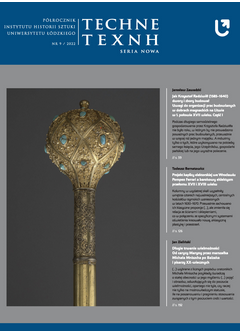Inwestycje hetmanów w XVII wieku Między interesem własnym a państwowym
Hetman’s investments in the 17th century Between self and state interest
Author(s): Zbigniew BaniaSubject(s): Military history, Security and defense, 17th Century
Published by: Wydawnictwo Uniwersytetu Łódzkiego
Keywords: Eastern Borderlands; hetmans; Pidhirtsi; Zhovkva; 17th century; fortifications;
Summary/Abstract: At the end of the 16th century, the principle of the lifelong functioning of the hetman’s office was established. Perhaps it is no coincidence that the performing of hetmans function resulted in large-scale, sometimes exceptionally modern investments, they were: Zamość, Żołkiew, Brody, Stanisławow, Kudak and Okopy Św. Trojcy. The defense of the south-eastern borderland territories, where the hetmans had their greatest latifundia, initiated the creation of fortresses, centers of these latifundia, and at the same time created an effective system of defense of the entire state against Tatar and Turkish threats and Cossack uprisings. Stanisław Koniecpolski stood out, initiating the creation of a number of smaller fortresses - the most famous of them is Kudak - or Nowy Koniecpol, strengthening Bar with more modern fortifications, thinking about creating a Knight School in Lviv. What is worth emphasizing is the evolution of defense devices from simple bastions like in Żołkiew, through Brody bastions to modern, with panache designed fortifications surrounding Lviv at the end of the 17th century built on the initiative of Hetman Stanisław Jabłonowski. Another interesting problem are the mutual relations between the fortress and the residence, such as Brody and Podhorce, Lviv and Podkamień. The hetman-latifundists did not try to modernize the acquired older castles, such as Stanisław Koniecpolski, who did not modernize the sixteenth-century bastion system of castles in Mikuliniec and Jazłowiec. The Hetman’s office began to function as a permanent element of the political system of the Republic of Poland relatively late, so the hetman’s presence in the Senate was ensured by such additional dignities as the chancellor’s office – Zamoyski, Żołkiewski, and the castellan of Krakow – Koniecpolski, Jabłonowski. Only Stanisław Koniecpolski felt the need to emphasize his additional dignity by founding in the capital of Myślenice eldership, which was an endowment of the castellan dignity, in Myślenice a chapel for the miraculous image of the Blessed Virgin Mary. Summing up, the founding initiatives of the hetmans as state ministers and latifundists in the 17th century are extremely closely intertwined, which resulted from their involvement in the organization of the protection of their own estates most often Located in the eastern borderlands of the country, particularly exposed to military actions in the 17th century.
Journal: TECHNE. Seria Nowa
- Issue Year: 2022
- Issue No: 9
- Page Range: 25-40
- Page Count: 16
- Language: Polish

